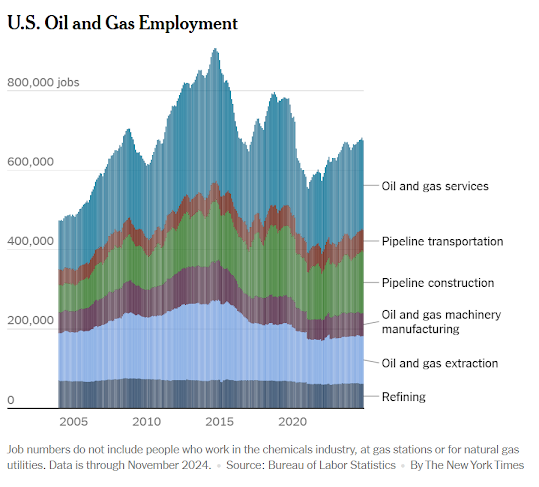A World Running on Money and Oil
The American political climate is not positively in favor of a green shift when it comes to the majority of working class occupations. We are living in a time of dire turmoil, where issues of inequality are exacerbated by our changing climate. Who gets access to the financial means to be a part of the global initiatives to slow down the impact of climate change within this century is a question we all must ask ourselves. Even more importantly, political leaders and policymakers should be on the cutting edge of this boiled over phenomenon.
The fact of the matter is that many people are working jobs under large corporations that are responsible for 80% of the world’s global fossil CO2 emissions since the 2016 Paris climate agreement. Most individuals on this planet cannot single handedly create the level of destruction that oil, gas, coal, and cement production have on our planet. Perhaps the simple solution is to stop supporting these industries? However, what might seem like a simple solution on paper is not possible for the working class and poverty stricken individuals both in America and worldwide.
The move to Green Jobs
These jobs must contain some level of conservation, regulation, and decarbonization, where their efforts made some headway in preserving our natural resources and lowering carbon footprints. Educated individuals holding positions as geologists, engineers, physicists, or data scientists could work for large oil and gas companies and make a The concept behind green jobs came about around 2004 but fluctuations in funding and education prevented true progress until around 2010 when the Bureau of Labor Statistics started to track information on the number of green jobs over time. lot of money doing so.

In some ways it is positive reinforcement for an overall negative project. It kept people fixated and invested in ensuring access to new oil sites remained plentiful. There has been some leeway since the pandemic, however, and oil and gas employment in the US is on a general decline. People are waking up to realize the oil empire is falling right before our eyes. While it does not help that the Trump Administration plans to fund more drilling operations and invest in “dirty” energy above its counterparts, the masses are seeing the truth out in the open.
The American political climate is not positively in favor of a green shift when it comes to the majority of working class occupations. We are living in a time of dire turmoil, where issues of inequality are exacerbated by our changing climate. Who gets access to the financial means to be a part of the global initiatives to slow down the impact of climate change within this century is a question we all must ask ourselves. Even more importantly, political leaders and policymakers should be on the cutting edge of this boiled over phenomenon.
The fact of the matter is that many people are working jobs under large corporations that are responsible for 80% of the world’s global fossil CO2 emissions since the 2016 Paris climate agreement. Most individuals on this planet cannot single handedly create the level of destruction that oil, gas, coal, and cement production have on our planet. Perhaps the simple solution is to stop supporting these industries? However, what might seem like a simple solution on paper is not possible for the working class and poverty stricken individuals both in America and worldwide.
The move to Green Jobs
These jobs must contain some level of conservation, regulation, and decarbonization, where their efforts made some headway in preserving our natural resources and lowering carbon footprints. Educated individuals holding positions as geologists, engineers, physicists, or data scientists could work for large oil and gas companies and make a The concept behind green jobs came about around 2004 but fluctuations in funding and education prevented true progress until around 2010 when the Bureau of Labor Statistics started to track information on the number of green jobs over time. lot of money doing so.
In some ways it is positive reinforcement for an overall negative project. It kept people fixated and invested in ensuring access to new oil sites remained plentiful. There has been some leeway since the pandemic, however, and oil and gas employment in the US is on a general decline. People are waking up to realize the oil empire is falling right before our eyes. While it does not help that the Trump Administration plans to fund more drilling operations and invest in “dirty” energy above its counterparts, the masses are seeing the truth out in the open.
“Before the pandemic, average wages in oil and gas production were more than 60 percent higher than those in manufacturing, construction and other related industries, federal data show. By last fall, that premium had narrowed to little more than 30 percent.” (Elliott, 2025)
If individuals have incentives to leave the once high paying jobs at the top 120 carbon emitting facilities in the country, their migration will speak for itself. According to the U.S. Department of Energy, clean energy jobs in 2023 grew at a rate of 4.9% which was beyond double of the national average at 2.0%. Unionization is easier in these jobs than for their counterparts, and the biggest boom was in construction employment in energy. These new developments are exciting, and the ability for the working class to make decisions with where they work and who they take money from is very powerful.
Inequality in the Green Jobs Sector
If it can be established that major corporations are dumping emissions left and right without consequences, where do the majority populous lie? The United States has seen a promising shift to greener jobs in recent years, developing solutions to some of the biggest problems in historically “dirty jobs”. Movements have been made to redefine infrastructure, but it takes a particularly motivated set of workers to pull off something as extravagant as transitioning traditional energy based city infrastructure to something more green or energy efficient.
 Inequality in the green job movement is clear to the naked eye. Injustices that perpetuate in any working industry is just as prominent in this market. Men hold about 70 percent of the world’s polluting jobs, and women are severely underrepresented in both green and carbon emitting positions that involve higher pay.This deep inequality comes from the lack of equal education opportunities in STEM. This goes beyond Caucasian women with American citizenship, and holds long roots in racial and poverty based discrimination. While we require all hands on deck to make considerable change, the easiest jobs to acquire are not green, and in fact keep poverty stricken families stuck in their situations, with little ability to become qualified for the jobs that benefit the world the most. Immigrants will have no hope in the current state of the country to offer their knowledge and labor, and for that we are currently at a considerable loss.
Inequality in the green job movement is clear to the naked eye. Injustices that perpetuate in any working industry is just as prominent in this market. Men hold about 70 percent of the world’s polluting jobs, and women are severely underrepresented in both green and carbon emitting positions that involve higher pay.This deep inequality comes from the lack of equal education opportunities in STEM. This goes beyond Caucasian women with American citizenship, and holds long roots in racial and poverty based discrimination. While we require all hands on deck to make considerable change, the easiest jobs to acquire are not green, and in fact keep poverty stricken families stuck in their situations, with little ability to become qualified for the jobs that benefit the world the most. Immigrants will have no hope in the current state of the country to offer their knowledge and labor, and for that we are currently at a considerable loss.  To create a sustainable economy and make large-scale change that will benefit the world, a lot of deconstructing must occur. Both physically with infrastructure, but also in terms of mindset and loyalty to consumer goods. It is now more important than ever to boost up the voices that cannot reach these positions, and call for a total removal of the companies that exploit them and the natural resources we depend on.
To create a sustainable economy and make large-scale change that will benefit the world, a lot of deconstructing must occur. Both physically with infrastructure, but also in terms of mindset and loyalty to consumer goods. It is now more important than ever to boost up the voices that cannot reach these positions, and call for a total removal of the companies that exploit them and the natural resources we depend on.



It was interesting to hear how men have 70% of the world's most polluting jobs. I have several male cousins who have worked for major oil drilling companies, so this was an interesting stat.
ReplyDeleteI believe you brought up a valid point in saying that maybe we should stop supporting these big corporations and industries. I also really liked how you added the section called inequality in the green jobs sector. As Lindsay said in her comment it really did shock me that men hold 70% of the world's most populating jobs whereas women are severely underrepresented.
ReplyDeleteIt is angering to think about the fact that trump wants to fund more drilling operations, when he should be focusing his time on renewable energy sources.
ReplyDeleteI am so disheartened that he acts before he thinks with these situations. If he only knew even half of the facts we have learned this semester alone, he could make a more informed decision. I worry he will ignore it until it becomes too late for policy to make any dent in our emissions.
DeleteGreat blog! This blog brings up some compelling points about the intersection of climate change, economic inequality, and labour rights. It’s not just about transitioning to green energy, it’s about making sure that transition is accessible and equitable for everyone.
ReplyDeleteGetting a smooth transition into green energy is key to making sure the lower class does not suffer from it. Making sure that the level employment stays or grows from switching to green energy.
ReplyDeleteEventually we are going to run out of drilling areas and run out of oil, why don't we focus a lot of that money on working on renewable energy and let that help us provide jobs to work for a better future.
ReplyDeleteIts so beneficial to society when the truth is more prevalent than lies. The dam removal movement is one example of old infrastructure being dismantled and improved upon. Hopefully this can help create paid stewardship positions to connect society closer to each other and their environment in a harmonious and sustainable way.
ReplyDelete80 percent of the worlds emissions comes from big corporations? With this new administration taking place I don't see this changing unfortunately because of money and incentives from moving production back to the USA under our new administration
ReplyDeleteIt's scary to hear how much of the world's jobs are leading to mass pollution and climate change. Aren't there any laws in place for new companies or businesses to take over and be limited in emissions? Why isn't more of this money and loans being put into renewable energy sources and such?
ReplyDeleteI loved how this article continues with our in-class themes and fleshes them out in logical terms, following them to their ends. Especially staring down the barrel of graduation, it is helpful to expand my understanding of the environmental economies and how they will continue to be degraded.
ReplyDeleteYou explore some of the complexities in the transition to renewable energy. Clearly there needs to be support and training for workers in carbon intensive industries to facilitate a just transition.
ReplyDelete